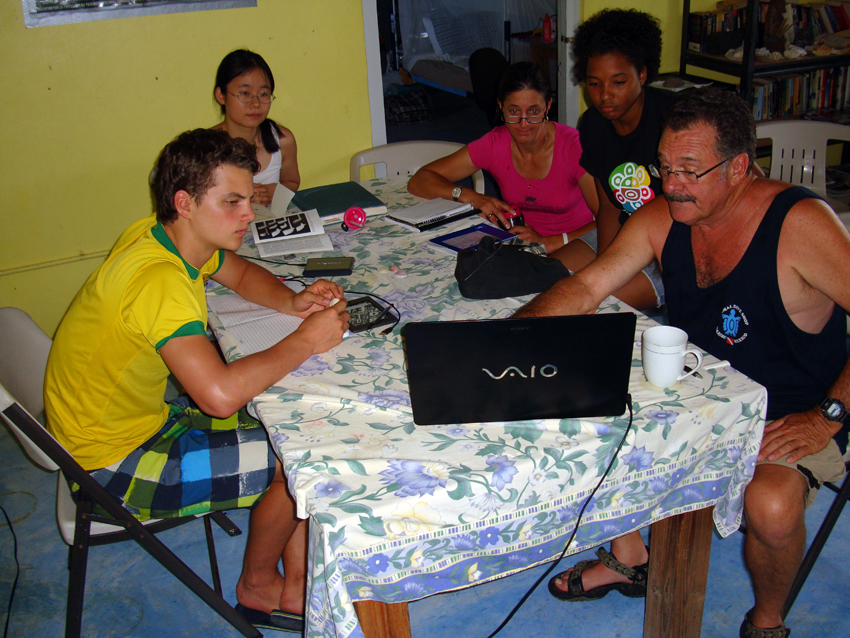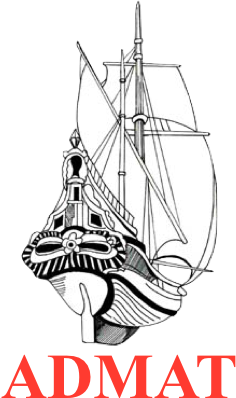
Archaeologist Chris Stephenson teaching others how to use the Aquapulse Metal Detector on land prior to going out on site

Student Kim Lemann from Switzerland learning how to use the Aquapulse

Archaeologist Ruth Pion's turn at finding the hidden object

The Team planning the dive in the early morning

A beautiful cloud pattern on route to the wreck site

Student Kim learning how to document and measure the lower hull timbers

A possible cant bow frame slowly revealing itself

A blackened broken section of a French faienceware vase neck is slowly uncovered

A broken French faienceware plate with a flower central pattern. in blue and white

Dr Spooner looking on as the Team work

A timber beam, possibly a cant frame being uncovered

A square meter of lower hull being documented

Nancy Olmsted and Ruth after a successful days work on The Tile Wreck site.

A piece of molten led from the wreck site

Dr Spooner investigates re-confirms a metal detector hit quite a way to the north of the central section of wreck site

The Team re-deploying the archaeological water dredge

Using the lift bag, the dredge head and tail are moved 27 meters north of the mast step, a very tiring job

The tail gate is also repositioned and manned

A good Team photo over The Tile Wreck site

Happy Ruth

The Team start to uncover the mud above the metal detector hit

Topside waiting with anticipation as to what will be found

A lead section is uncovered with more below the sand

The object will have to be very carefully uncovered

The strange lead object is uncovered

Once the object has be documented insitu it is placed on a plastic lid and lashed ready to be raised and taken back for conservation and further research

The lift bag breaks the surface with the lead artefact secured below

A lead artefact sees fresh air, the first time since the 1720's

John finishing a successful survey

The Team after a successful week on The Tile Wreck






























